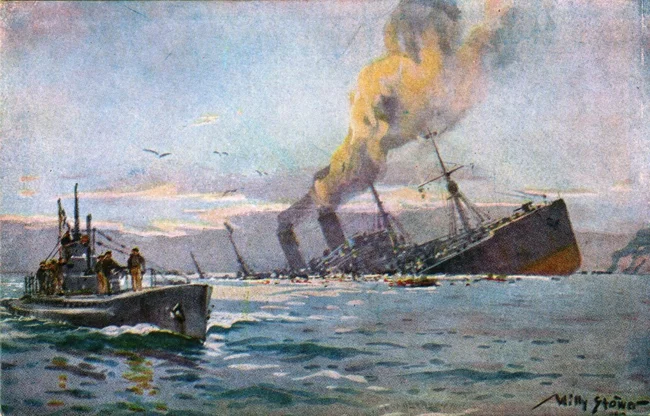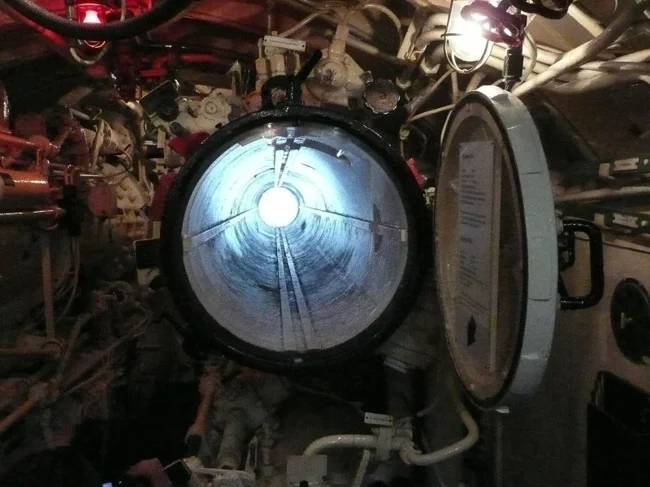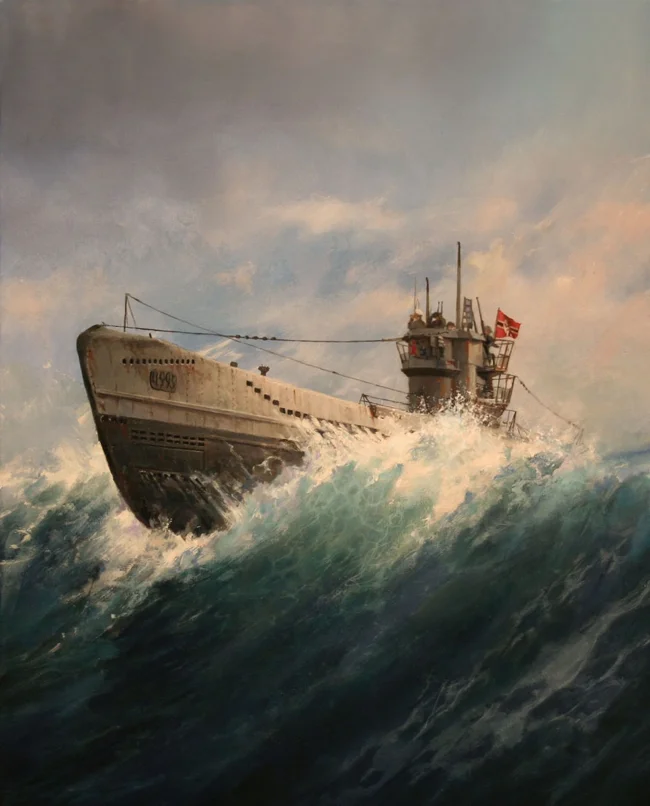Pirates "from under the water". The unreal story of a German submarine (5 photos)
The "pirate theme" has long been popularized in books and films, excessively romanticizing an ordinary, essentially, robber. Moreover, sometimes this image even acquires a cartoonish and fabulous quality, becoming absolutely the opposite of what he was in reality. However, sometimes a pirate can look completely different from what the imagination, overflowing with media-created versions, draws. 
Type XXI submarine U-2540 converted into a museum in Bremerhaven
For example, what about a pirate submarine from World War II whose captain refused to give up and stop his activities?
The phrases "submarine" and "World War II" usually conjure up images of German submariners who spent weeks and months cruising the Atlantic hunting for Allied convoys. In that war, it was Germany that relied on its submarine fleet and made serious progress in this direction.
The most mass-produced series of submarines were the famous "sevens", U-Boot of the seventh series. However, progress never stands still, and during the war it moves very rapidly, so that by 1945 the most advanced class of German submarines were the submarines of the XXI series. However, the representatives of the pinnacle of submarine fleet development left the slipways under the thunder of the cannonade of the approaching front. Few of them went to sea, and the unfinished hulls were blown up on the slipways.
The stories that, fleeing from Soviet and allied troops, many of the top brass of Nazi Germany tried to sail away on submarines to South America were long considered myths, but over time it turned out that they were still based on something. Some really did disappear, handing over their "transport" to neutral countries. However, not everyone did so.
U-2670 received the message about the surrender in the open sea. Its captain, Paul von Rettel, did not want to give up and, after consulting with his crew, received full support. They decided to head towards Germany's last remaining ally in the war - Japan. However, these plans were not destined to come true. So, on September 2, 1945, the submarine's radio operator intercepted a message about Japan's surrender - there was nowhere to break through. It would seem that there were no options left, but the submarine's crew again rejected the idea of surrendering and decided to try their luck. By this time, the boat was already off the coast of Australia.
The further fate of the submarine is shrouded in legends, on the basis of which you can shoot an adventure film. Or even a TV series. Here and contact with the remnants of the Japanese forces and officers of the Japanese fleet that remained in the territories liberated by the allies. And the use of a submarine for drug trafficking, and pirate attacks on transport ships on the tip of a spy network organized by von Rettel. There are even stories about the creation of an entire base for a pirate submarine, organized on the uninhabited atoll of Vanaranga in Polynesia.
In the end, the wreck of the "yushka" as a result of betrayal, its death on the rocks of the island, and then the long "Robinsonism" of the six surviving crew members and the captain are mentioned. In the finale, the survivors, of course, get to the millions amassed from pirate activities, which are lying in the banks of Fiji, and leave for Argentina, where the trail of the "pirates-from-under-the-water" is lost forever. 
Transport sunk by a German submarine. Drawing by Willy Stöwer
This story in various interpretations is on the Internet and even in some periodicals. However, in fact... it is pure fiction!
The submarine U-2670 really existed and was laid down at the shipyard, but... it was never completed and never went to sea. And certainly did not attack Allied ships in the Pacific and Indian Oceans. Next. Paul von Rettel. A person with such a name is not listed in any register of officers, much less captains of German submarines, and this can be verified - all the data is in the public domain.
In addition, the idea of a pirate submarine is simply absurd. A submarine is an extremely complex and capricious military instrument that requires constant maintenance, repairs and the presence of trained personnel both on board the boat and on land. Only an industrially developed state can provide all this, and therefore even the idea of some kind of makeshift base on the shore looks absurd. And in this regard, there is no need to go for abstractions, since there were cases when South American countries gave submarines they received in one way or another to their allies, realizing that such a military "toy" requires a well-established infrastructure and a lot of resources for maintenance. 
Torpedo tube on a submarine of the XXI series
Most likely, the unknown creators of this myth tried to "stretch" the romance and principles that underlie the novels about dashing pirates of the heyday of the sailing fleet onto relatively modern realities. Indeed, a wooden sailing ship could operate for some time in isolation from ports, receiving everything it needed on wild islands, and carry out some artisanal repairs there. However, even in this case, this could not continue for long.
It is also interesting that the myth of U-2670 sometimes echoes other maritime stories. For example, in one of the versions of the death of the transport S.S. Ourang Medan ("Man from Medan"), in the waters of the Strait of Malacca, there is an assumption that the cause of its death could have been U-2670! 
"U-boot", painting by Augusto Ferrer-Dalmau Nieto
To many who are not aware of the complexity of naval logistics and the maintenance of warships, this story may seem plausible, but even a person who is at least a little immersed in this topic clearly sees its complete inconsistency.
In essence, this story is an ordinary maritime legend, which has grown from a banal invention thanks to the efforts of conspiracy theorists. Moreover, over time, the story of the pirate submarine began to be woven into other stories, both real and far-fetched. Needless to say, myths, tales and legends are constant companions of humanity, especially in the era of incredible abundance of information. And this is not surprising at all - after all, a legend, as a rule, sounds much more beautiful than reality





















